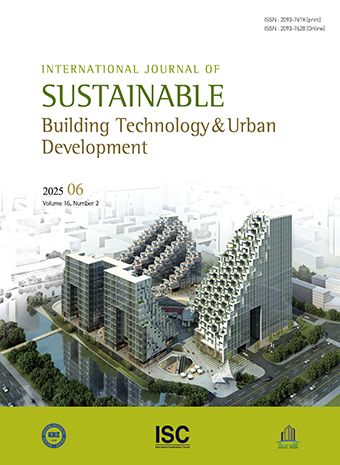General Article
Abstract
References
Information
M. Turunen, O. Toyinbo, T. Putus, A. Nevalainen, R. Shaughnessy, & U. Haverinen-Shaughnessy, Indoor environmental quality in school buildings, and the health and wellbeing of students, International journal of hygiene and environmental health. 217(7) (2014), pp. 733-739.
10.1016/j.ijheh.2014.03.00224709335L. Xiong, X. Huang, J. Li, P. Mao, X. Wang, R. Wang, & M. Tang, Impact of Indoor Physical Environment on Learning Efficiency in Different Types of Tasks: A 3× 4× 3 Full Factorial Design Analysis, International journal of environmental research and public health, 15(6) (2018), pp. 1256.
10.3390/ijerph1506125629899260PMC6025257- Publisher :Sustainable Building Research Center (ERC) Innovative Durable Building and Infrastructure Research Center
- Publisher(Ko) :건설구조물 내구성혁신 연구센터
- Journal Title :International Journal of Sustainable Building Technology and Urban Development
- Volume : 11
- No :2
- Pages :94-111
- Received Date : 2020-06-22
- Accepted Date : 2020-06-23
- DOI :https://doi.org/10.22712/susb.20200008




 International Journal of Sustainable Building Technology and Urban Development
International Journal of Sustainable Building Technology and Urban Development










